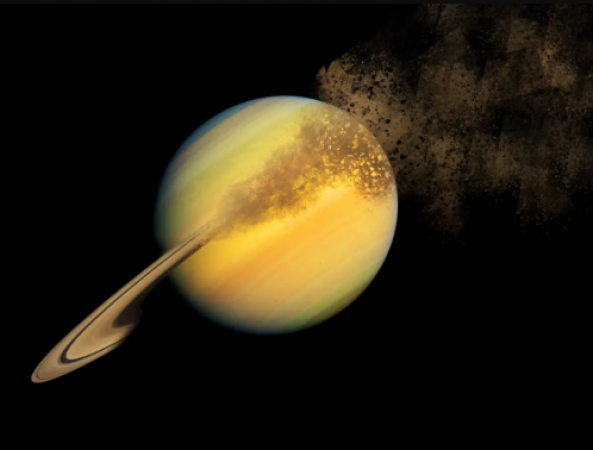
USA: Astronomers have long been fascinated by Saturn's ring system, but the recognisable rings are in peril. Due to Saturn's strong gravitational pull, its rings, which are believed to be enormous ice chunks, are steadily falling as icy rain onto the planet. We are unsure of how quickly the rings are thinning out and how much time remains before the rings disappear.
The innermost rings of Saturn have been steadily falling onto the planet's upper atmosphere since the 1980s, according to astronomers. According to observations made by NASA's Cassini mission, which explored Saturn and its ring system, between 400kg and 2,800kg of icy rain are falling onto the planet every second, warming its upper atmosphere.
James O'Donoghue, who is in charge of the research, said they are still trying to determine exactly how quickly they are eroding. According to recent studies, Saturn's rings will continue to exist for a few hundred million years. Although this may seem like a long time, O'Donoghue explained that it was actually a relatively quick death compared to the history of the universe.
Also Read: The Federal Reserve increased its benchmark lending rate once more to reduce inflation
There are seven alphabetically named rings on Saturn. A, B, and C are the three major rings. The four remaining rings—D, E, F, and G—are more recent discoveries and are fainter. The Cassini Division, which divides rings A and B and is about 4,700 kilometres wide, is the only space separating the rings from one another. Up to 282,000 km are the rings' distance from the planet.
Contrary to conventional wisdom, Saturn's rings have not always been a part of the planet. The planet's famous rings are thought to be 100 million years old by experts. Our solar system is thought to have formed 4.5 billion years ago as a point of comparison.
Also Read: British citizens beg the UK government for assistance in saving their stranded relatives
It is thought that the fragments of comets, asteroids, or broken moons that make up Saturn's rings were torn apart by the planet's powerful gravitational pull.
According to NASA, the rings are composed of "billions of small pieces of ice and rock coated with other materials such as dust." Most of the ring's constituents are icy grains as small as dust or chunks the size of a house.
Also Read: Egypt bus crash with truck results in 14 fatalities and 25 injuries
Now, researchers are relying on data from the James Webb Space Telescope (JWST) to estimate the age of Saturn's famous rings. On a long-term observation campaign, the powerful Webb telescope will collaborate with the Keck Observatory in Hawaii to study the planet.